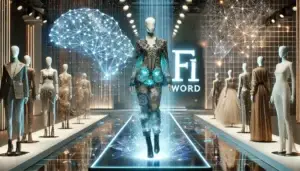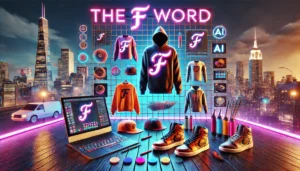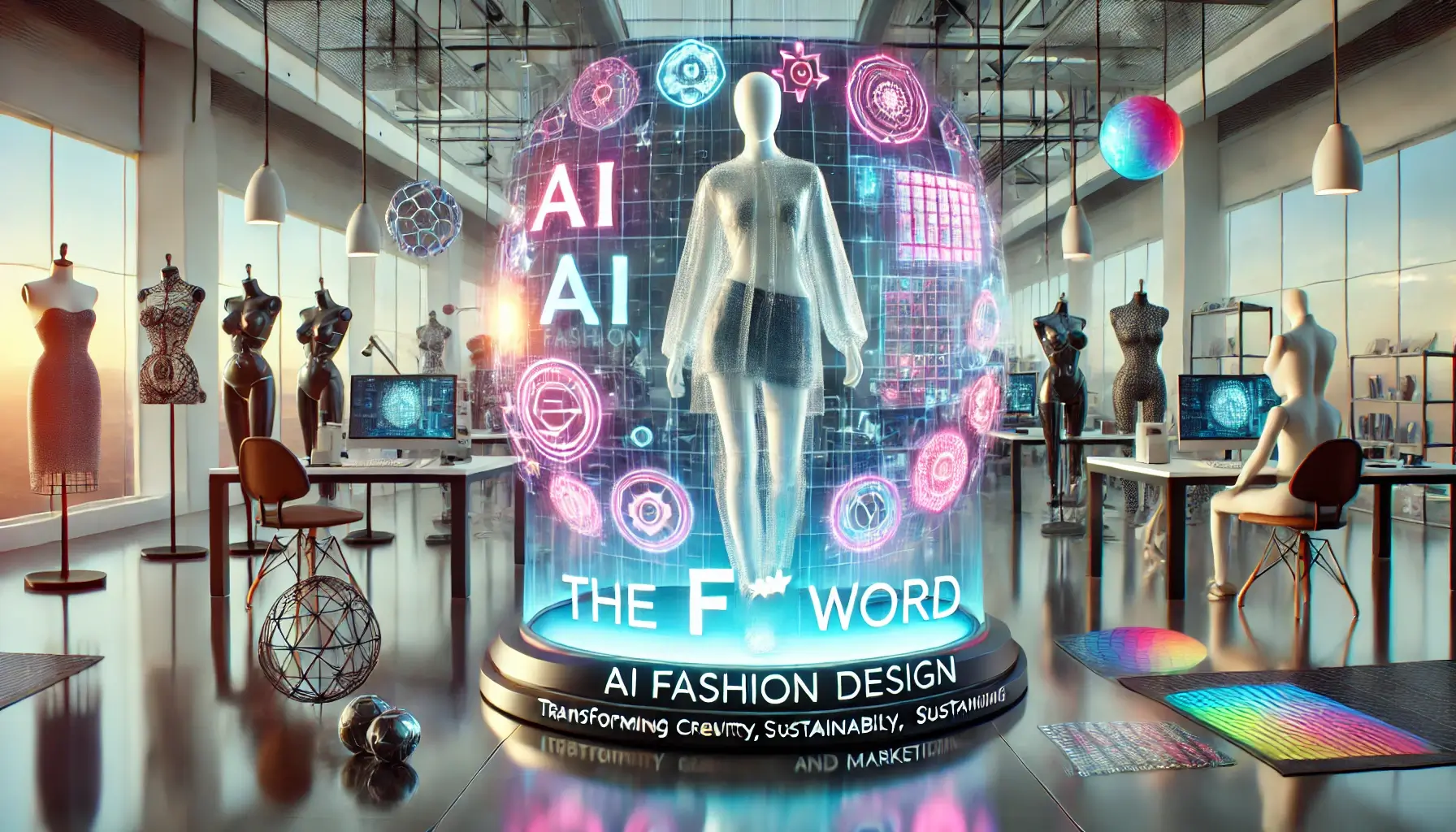The fashion industry is known for its fast-paced trends. How can designers not just keep up, but get ahead? Generative AI fashion design is changing how we create, market, and experience fashion. This post explores how this technology revolutionizes design, offering practical applications for fashion businesses.
Table of Contents:
Generative AI and Fashion Design: A New Era of Creativity
Generative AI is transforming fashion. This technology empowers designers to rapidly generate numerous designs by inputting parameters like fabrics, colors, and style preferences. This accelerates experimentation and fosters innovative ideas, such as limited-edition items or brand collaborations. It also supports the creative process by generating new possibilities and facilitating unique design variations.
Ganni’s Spring/Summer 2024 runway show featured a generative AI installation that answered guests’ questions. Luxury label Casablanca used AI-generated images for their entire Spring/Summer 2023 campaign. The technology has made inroads for Heliot Emil’s fashion efforts. There are gen AI tools to assist.
Transforming the Design Process
Generative AI fashion design saves significant time. Software like AiDA creates design templates in seconds, benefiting fashion businesses and fashion design workflows. Cala allows the creation of over 100 sketches a day, a testament to ai design’s speed.
This also frees experienced fashion designers to focus on pushing design boundaries. They can spend less time on mockups and more time perfecting signature pieces. Newer designers benefit from a library of designs and patterns, accelerating the development of their technical design skills. Everyone benefits as more talent blossoms.
Design software paired with artificial intelligence design tools opens up new opportunities in design processes. Many of the tools provide designers with additional assistance as the capabilities in intelligence design grow each year.
Boosting Marketing Efforts and Personalizing the Customer Journey
Generative AI’s influence extends beyond design into marketing. Marketing teams gain advanced software solutions that streamline the creative process and personalize customer communications. Think about having marketing copy ready almost instantly.
Imagine a tool creating multiple options based on content type, topic, audience, and tone. This level of support from generative ai enhances marketing team efficiency. Tools like CopyAI, Jasper AI, and Writesonic are pioneering this space, leveraging generative AI for product descriptions and lower-funnel marketing.
Fashion brands like Snipes and Adore Me have embraced this, improving SEO and targeted messaging across the buying cycle. They include personalized product recommendations, emails regarding abandoned shopping carts, and new product launch sequences.
Improving the Shopping Experience
Online shopping can be frustrating. 42% of online shoppers feel model images don’t represent them. Almost 60% are disappointed when products appear differently than expected (source), leading to high return rates.
Generative AI personalizes shopping with chatbots using natural language processing. Chatbots answer inquiries, suggest style preferences, and provide product recommendations. Companies like Zalando and Kering are leading this charge, using chatbots to recommend accessories or assemble outfits.
Virtual try-on tools, like Veesual, leverage AI. These tools provide online shopping assistance and let shoppers select products and models based on demographics. Machine learning and deep learning deliver personalized shopping assistance. Consumers feel understood with online shopping assistance, receive relevant product suggestions, and experience a better online shopping experience.
Challenges and Considerations with Generative AI Fashion Design
Generative AI’s fashion future is promising. However, challenges remain. Generative ai tools can help overcome supply chain issues. Intellectual property is an area of concern for businesses implementing gen AI in their design and development processes. Legal support for fashion companies will become ever more critical. There is the potential for fashion brands to utilize these same AI tools to create content meant to help consumers and the general public about fashion. Brands might want to engage more consumers by producing free educational material in areas such as the design process. The fashion brands might generate consumer profiles and use that insight to better speak to them.
- Data Bias: Biased training data leads to biased designs. A dataset primarily comprising Western fashion trends may hinder AI’s ability to create clothing suitable for other cultures.
- Job Displacement Concerns: Some fear AI replacing human designers (source). AI expediting production tasks such as common templates, most fashion jobs require human skills not yet replicated by AI, such as innovative pattern making.
- Intellectual Property Issues: AI-generated designs can resemble existing work, raising copyright concerns. Determining ownership is crucial, especially with growing use (source). Brands should consult legal teams to navigate these complexities.
Conclusion
Generative AI fashion design is reshaping the industry. It enhances the customer experience, providing personalized product recommendations and shopping assistance. AI isn’t replacing humans, but enhancing creativity. Designers can sketch, utilize generative AI, curate outputs, employ existing design tools such as CLO3D, explore design variations, and finalize color palettes using other ai design tools. Ai design offers a path for experienced designers as well as newcomers.
It’s a collaboration, combining technology and talent. Designers create innovative collections while improving customer experiences in both online and offline channels. This also includes empowering consumers with educational content from generative AI. From supporting newer fashion designers to accelerating product development, the collaborative effort propels the fashion industry forward.
This approach combines tech and human talent to create amazing things. Generative AI enables brands and individuals like Collina Strada to produce creative educational content around what it takes to become a fashion designer. AI can further streamline store operations by aiding in activities such as supply chain management or even to provide further personalized customer service via generative AI chatbots in person and online. Consumers benefit too. An ai tool could make product descriptions faster and also provide a mood board to generate marketing materials. Gen AI can support functions to train employees and enhance creativity in development processes.





